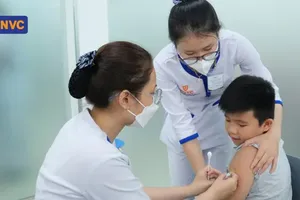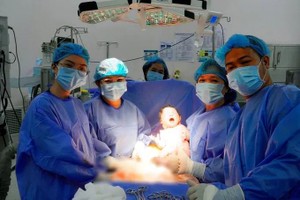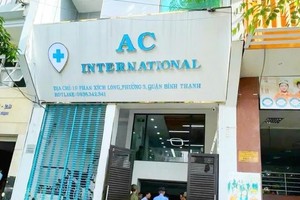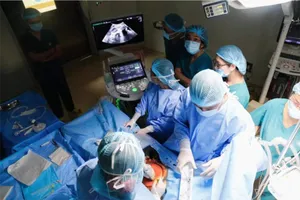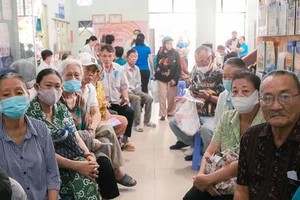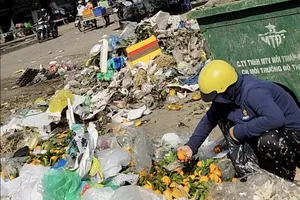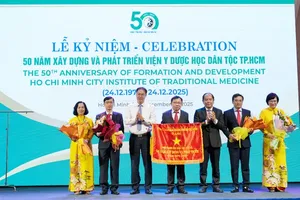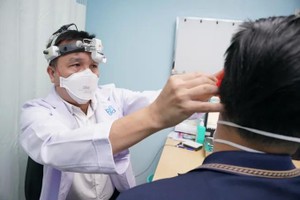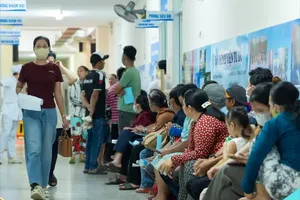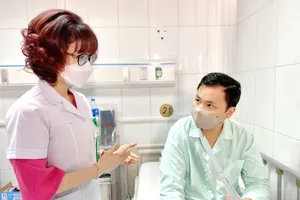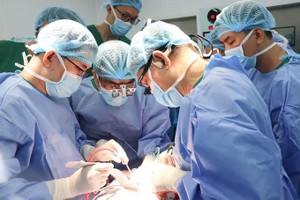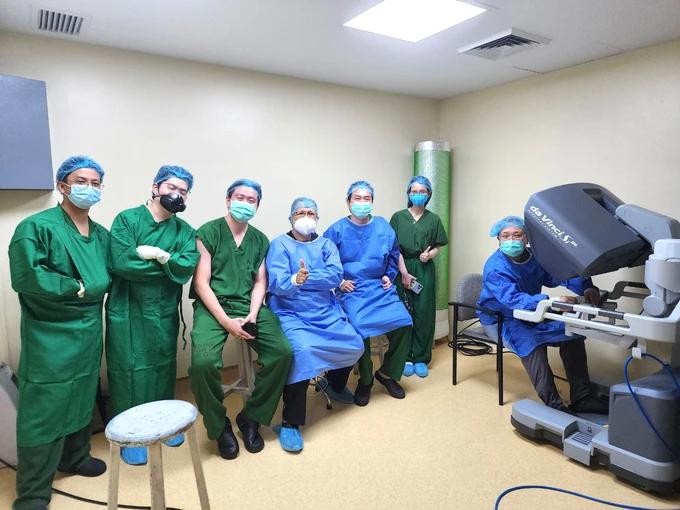
After undergoing chemotherapy, 59 years old Filipino Sol Facun Asuncion decided to fly from the Philippines to Ho Chi Minh City. At Cho Ray Hospital, he underwent minimally invasive surgery to remove a tumor in the gastroesophageal junction, resecting the upper half of the stomach and performing thorough lymph node dissection. He was discharged after 12 days.
The serendipity that led this patient to choose HCMC for treatment originated from a surgical conference held in the Philippines. During the conference, Associate Professor Dr. Lam Viet Trung, Deputy Director of Cho Ray Hospital, delivered an impressive presentation on gastric cancer surgery. Some attending experts facilitated the connection between Mr. Sol Facun Asuncion and HCMC to achieve optimal treatment outcomes.
Recently, an Indonesian doctor also underwent four months of surgery and treatment for colorectal cancer at the University of Medicine and Pharmacy Hospital in HCMC. As a fellow healthcare professional, he carefully considered entrusting his life to Vietnamese doctors. The University of Medicine and Pharmacy Hospital is also a training center for endoscopic surgery, educating nearly 800 doctors from Indonesia, Malaysia, Singapore, and Pakistan, and leaving a profound impression on colleagues.
It’s evident that Vietnam is a reliable destination for healthcare, boasting highly skilled physicians and healthcare facilities that provide service quality on par with global standards. Currently, approximately 300,000 foreign patients visit the Southeast Asian country for outpatient care each year, with 57,000 receiving inpatient treatment, and about 40 percent of these cases are concentrated in HCMC. Before the Covid-19 pandemic, this sector generated around US$2 billion in annual revenue.
One of the strengths of attracting foreign visitors to Vietnam for medical treatment is the low cost. For example, the success rate of IVF (in vitro fertilization) in Vietnam is comparable to the global average, but the cost is only VND70 million- VND 100 million meanwhile in the Philippines, Singapore, and Thailand, it’s around VND250 million; in the United States, it’s about VND700 million. In Australia, patients have to wait about 3-4 months for joint replacement surgery, while the waiting time in Vietnam is 3-4 weeks, with service costs at one-third the price.
Recently, a Vietnamese student studying in Canada had to urgently return to Ho Chi Minh City for surgery to remove a large ovarian tumor, which cost around VND10 million.
It’s visible that Vietnam’s southern largest city houses many reputable hospitals with highly skilled doctors and medical achievements, gaining recognition internationally.
However, there are still obstacles that give pause to foreign patients. These include language barriers (including medical terminology), many hospitals lacking international certification for patients to use global insurance, and a lack of attractive medical tourism products for combining travel and healthcare.
These challenges have been acknowledged by the Ho Chi Minh City Department of Tourism. The tourism and healthcare sectors have collaborated to offer 30 medical tourism products, issuing a ‘Health Tourism Handbook’ to facilitate convenience for visitors. Nevertheless, the ‘billion-dollar’ tourism sector in this field has not yet fully realized its potential.
Some believed that relying solely on word-of-mouth reputation isn’t sufficient; proactive promotion of the exceptional value that patients can experience when choosing Vietnam in general, and Ho Chi Minh City in particular, for healthcare is crucial. As latecomers, we still have the advantage of learning from neighboring countries like Thailand and Singapore, which attract approximately 3.4 million and 1.5 million medical tourists annually, respectively. In reality, Vietnamese individuals continue to spend at least US$2 billion abroad for medical treatment each year.
Given this reality, the Ministry of Health has developed a plan to attract foreigners, overseas Vietnamese, and high-income Vietnamese individuals to seek high-quality medical treatment in Vietnam. By 2030, the goal is for 95 percent of central hospitals to be recognized as having high-quality international treatment facilities, and the annual growth rate of foreign patients seeking medical care in Vietnam to be at least 1 percent.
However, achieving these targets will require significant effort, but it is not an insurmountable challenge given the existing capabilities of Vietnam’s healthcare sector.
